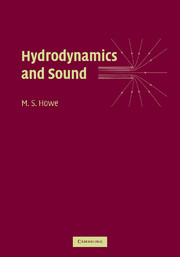4 - Rotational Incompressible Flow
Published online by Cambridge University Press: 06 July 2010
Summary
The vorticity equation
Irrotational flow can be established from a state of rest in an ideal incompressible fluid by the instantaneous transmission throughout the fluid of impulsive pressures from a moving boundary. If the boundary motion is subsequently arrested the motion everywhere ceases immediately. Kelvin's theorem (§2.10), that the kinetic energy of an irrotational flow is always smaller than that of any other flow consistent with the same boundary conditions, is a consequence of the fact that the number of degrees of freedom of irrotational motion is exactly the same as the number of degrees of freedom of the boundary itself. In a real fluid, however, there are typically an unlimited number of degrees of freedom, the flow is rotational, and the motion continues after the boundary stops moving. Kelvin (1867) therefore proposed the following definition of a vortex in a homogeneous incompressible fluid: ‘… a portion of fluid having any motion that it could not acquire by fluid pressure transmitted from its boundary’. Vorticity is actually a derived kinematic quantity, but its introduction greatly increases understanding of a complex flow and a knowledge of its distribution frequently permits the description of the fluid motion to be simplified.
When a small fluid particle is imagined to be suddenly solidified without change in its angular momentum, it continues to translate and rotate as a solid body. Its initial angular velocity of rotation is determined by its moment of inertia tensor, which depends on the particle shape.
- Type
- Chapter
- Information
- Hydrodynamics and Sound , pp. 211 - 285Publisher: Cambridge University PressPrint publication year: 2006



